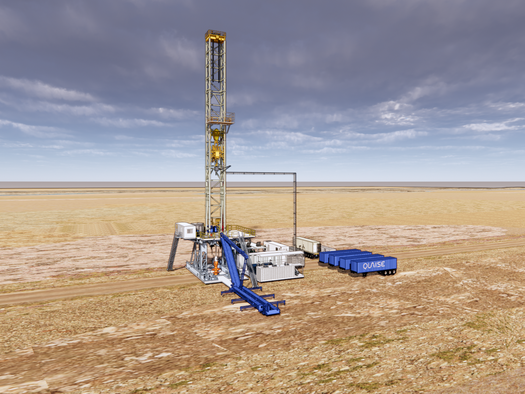World’s deepest hole digger could unlock enough geothermal energy to power the world
‘The total energy content of the heat stored underground exceeds our annual energy demand as a planet by a factor of a billion,’ says Quaise Energy founder
Your support helps us to tell the story
From reproductive rights to climate change to Big Tech, The Independent is on the ground when the story is developing. Whether it's investigating the financials of Elon Musk's pro-Trump PAC or producing our latest documentary, 'The A Word', which shines a light on the American women fighting for reproductive rights, we know how important it is to parse out the facts from the messaging.
At such a critical moment in US history, we need reporters on the ground. Your donation allows us to keep sending journalists to speak to both sides of the story.
The Independent is trusted by Americans across the entire political spectrum. And unlike many other quality news outlets, we choose not to lock Americans out of our reporting and analysis with paywalls. We believe quality journalism should be available to everyone, paid for by those who can afford it.
Your support makes all the difference.A machine capable of digging the world’s deepest hole could potentially unlock enough renewable energy to power the entire planet, according to its creators.
US-based Quaise Energy is developing a drilling rig that it hopes will reach 16km (10 miles) beneath the Earth’s surface in order to tap “inexhaustible clean energy” from geothermal heat in the crust.
“The total energy content of the heat stored underground exceeds our annual energy demand as a planet by a factor of a billion,” Matt Houde, co-founder of Quaise Energy, said at TedX Boston last week.
“Tapping into a fraction of that is more than enough to meet our energy needs for the foreseeable future.”
The current record for the world’s deepest hole is the Kola borehole in the Arctic Circle, which measures 12.2km deep. It took the USSR more than two decades to drill but was abandoned following the collapse of the Soviet Union.
The difficulties of drilling at those depths have meant tapping deep geothermal energy at scale has so far proved impossible.
After boring through softer rock closer to the surface, Quaise Energy replaces traditional drill bits with milimetre wave energy that melts and vaporizes the harder rocks it encounters.
The technique was developed by researchers at MIT 15 years ago, and is finally ready to be taken out of the lab.

Several obstacles still remain before record depths can be reached, notably the challenge of removing the ash from the borehole once the rock has been vaporized.
“Our current plan is to drill the first holes in the field in the next few years,” said Houde.
“And while we continue to advance the technology to drill deeper, we will also explore our first commercial geothermal projects in shallower settings.”
If successful Quaise Energy claims that any country on Earth could potentially become energy independent. The firm has already raised more than $63 million in an effort to commercialise the technology.


Join our commenting forum
Join thought-provoking conversations, follow other Independent readers and see their replies
Comments